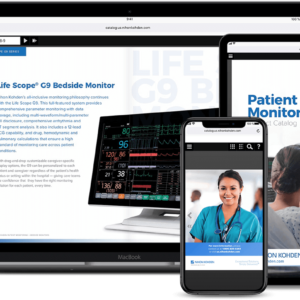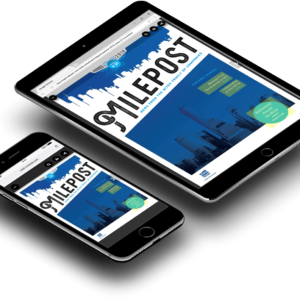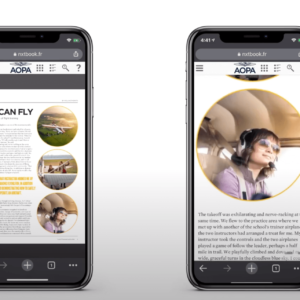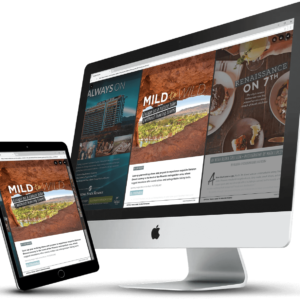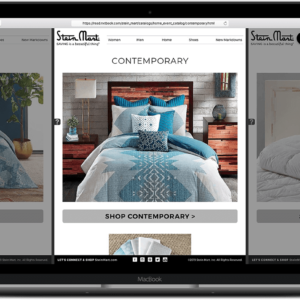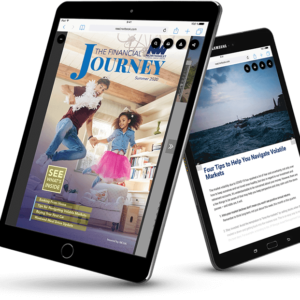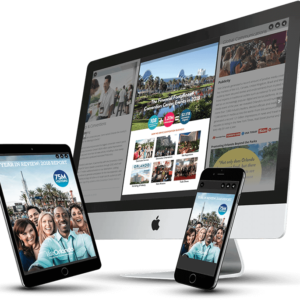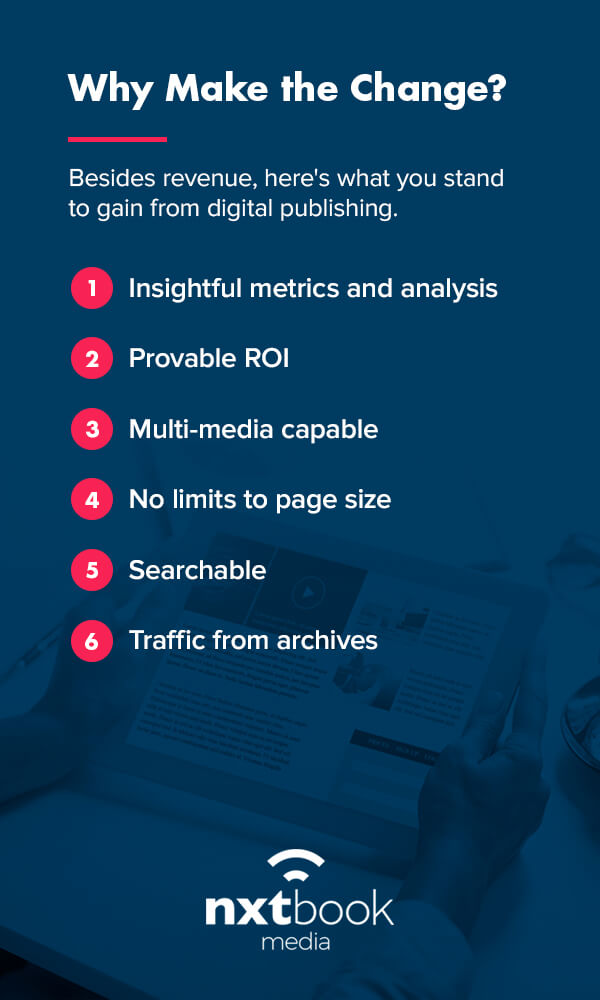Why Digital Publishing Is a Revenue Opportunity

Written by Matt Berringer
November 6, 2020
Have you ever thought about how much money you could save by taking a print publication online? How about the added revenue from digital advertisers? While you’ll find both advantages and disadvantages to digital publishing, its revenue potential is enticing many publishers to make the transition.
Start by learning more about:
- Digital Publishing Basics
- Growth of Digital Publishing
- Digital Publishing as a Revenue Opportunity
- Advantages & Disadvantages of Traditional Print
- Making the Switch
- Scheduling a Walkthrough
What Is Digital Publishing?
Chances are, you’ve interacted with media in the digital world. Traditional media encompasses anything that communicates ideas — from fine art to print newspapers. Digital publishing is the act of making media available online. For example, print publishers might create digital versions of their physical magazines. Now, you can find digital publications that take full advantage of the form by building content meant for online viewing.
Are Digital Media and Electronic Publishing the Same as Digital Publishing?
“Electronic publishing” is the original term for digital publishing. While it’s still in use today, along with the shortened “e-publishing,” “digital publishing” is more common.
You’ll probably also see “digital media” and “digital publishing” used interchangeably. If you want to get super technical, digital media is the content itself, while digital publishing is posting and disseminating the content online.
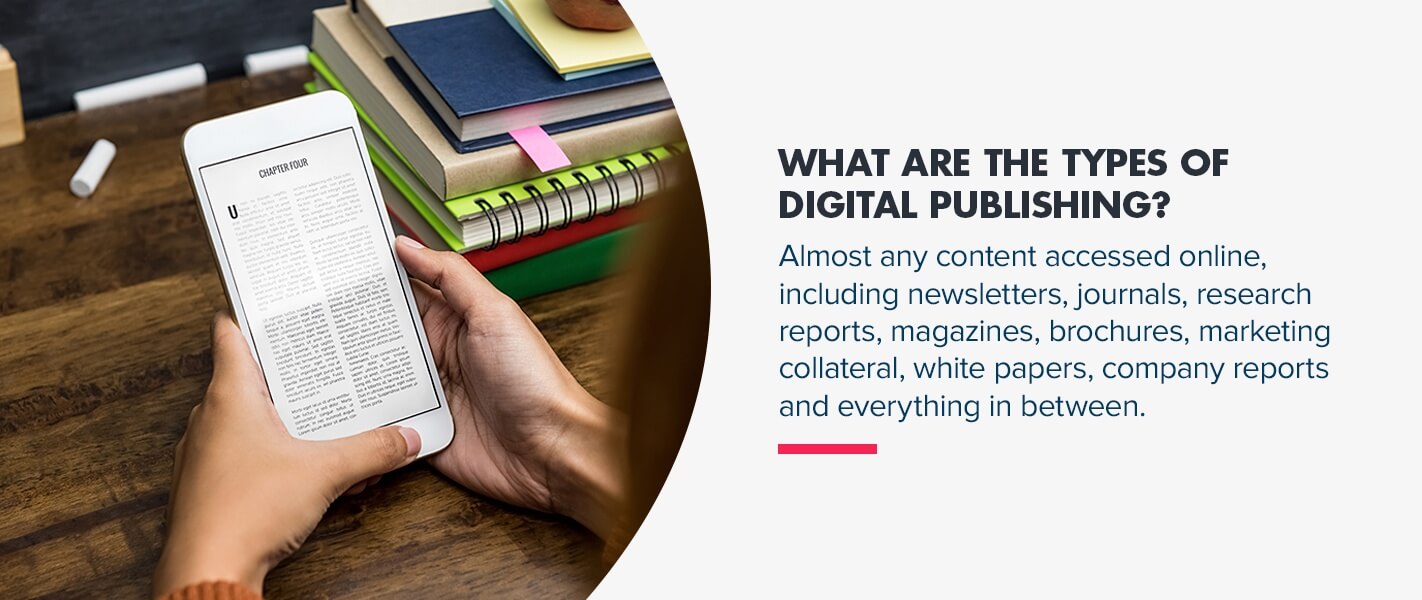
What Are the Types of Digital Publishing?
Many people associate digital publishing with e-books. While e-books are one arm of digital publishing, there are many others. Almost any content accessed online falls under this umbrella. It includes newsletters, journals, research reports, magazines, brochures, marketing collateral, white papers, company reports and everything in between.
While digital publications can reach their audiences through webpages or PDFs, they’re not the only online formats. The industry is always searching for new ways to maximize the digital experience. Publishers use digital- and mobile-first platforms that showcase their media in the most user-friendly, immersive format.
Examples of Digital Publishing
The best way to understand digital publishing is to look at how others in your industry do it. One great example is bundled digital experiences.
You’ll see examples of digital publications taking the form of magazines, brochures, catalogs and corporate reports. They have a different look and feel than a website because they may have flippable pages, much like a print magazine. The difference is that this content is specifically for online viewing. Depending on the platform used to create the content, your content might adjust to any screen size and can scroll down to any page length. It also features integrated video, audio, and other interactive elements. Find out how publishers use digital editions to reach their audiences, increase traffic and engagement and create an ideal viewing experience.
The Growth of the Digital Publishing Industry
One of the digital publishing advantages is that, in the battle of print vs. digital magazines, e-publications are winning. While print is still a major source of revenue in publishing, online magazines are seeing explosive growth.
Expanding Market Size and Growth
All trends indicate a continued move to digital publishing in the future. Digital publishing began in earnest after e-readers became widely available. In 2011, e-book sales overtook print sales for the first time. That year, just 17% of adults had read an e-book in the past year. That number jumped to 28% in 2014, and has hovered between 25 and 28% since.
Recent digital publishing trends show e-magazines have seen similar growth in the past several years. Print magazine readership fell from 69.7% in 2015 to 62.8% in 2018. During the same period, digital edition readership jumped from 36.8% to 42.4%, a 15% increase. Experts project e-publishing’s market size to reach $27,626 million in 2020, an 11.6% year-over-year increase. Other projections expect the global digital market to jump from 2019’s $44.8 billion to $66.7 billion in 2020.
Digital Publishing Market Drivers
Why is digital publication gaining so much traction? The simple answer is the internet. Internet devices, from cellphones to laptops, let people access their favorite content wherever they go. And, as digital publications get more sophisticated, they increase engagement over traditional media.
It’s no secret the world is in a love affair with digital content. As of 2019, the world’s internet users spent three hours and 23 minutes online via mobile devices, and another three hours and 27 minutes on desktops or laptops. Digital publishers take advantage by placing high-quality, engaging content where people want to see it.
Forecasting the Growth of Digital Publishing Business
With the digital publishing market’s impressive size, we expect the trend to continue. Digital-first e-publishing will reach a market size of $34,690 million by 2025. Three segments of the market will fuel this growth — e-books, e-papers and e-magazines. According to one estimate, e-books will earn $19,996 million in revenue in 2025. E-newspapers will rake in another $9,390 million, and e-magazines an added $5,302 million.
How Digital Publishing Increases Revenue
The industry’s market size and projected growth make one thing evident — digital publishing is a huge potential revenue stream. The question is, how do online newspapers and e-magazines make money? What’s driving digital publishing revenue?
Reaching Broader Audiences
Print publications have a limited circulation based on how many copies you publish. Online, however, your distribution is virtually limitless. Your local audience can quickly gain national or even global readership.
Online, you have more tools at your disposal to increase reach. Search engines remain one of the best ways to get your content found online. In 2019, 20% of Americans accessed news mainly through search engines. Whether your publications focus on hard-hitting news or niche topics, search engines let your audience find you when they’re actively looking for content or information. A focus on SEO boosts traffic, readership, brand awareness and more.
See more marketing resources:
- Develop an Effective Content Marketing Plan
- Getting More Reach on Social Media
- Telling Your Story With The Right Channel
- B2B Email Marketing Strategy
- B2B Marketing Materials
- Developing a Digital Brand Strategy
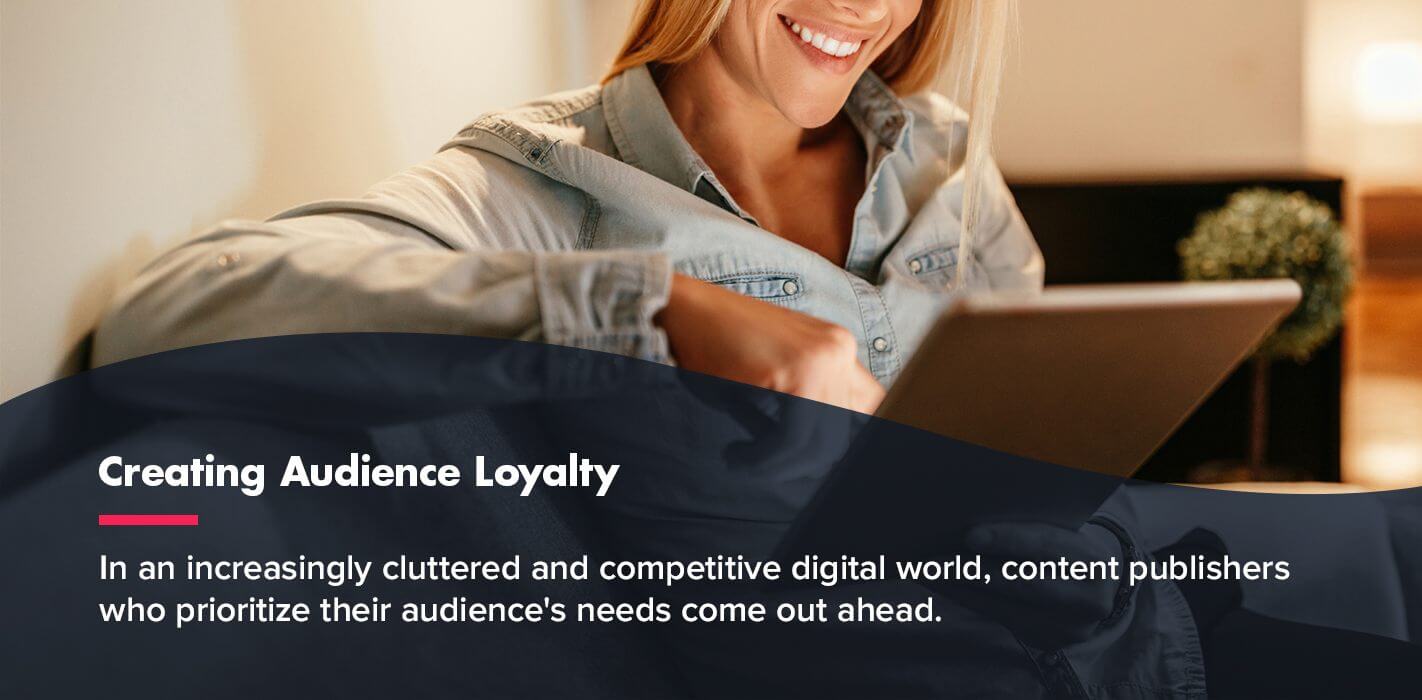
Creating Audience Loyalty
What keeps an audience engaged and coming back for more? User experience. In an increasingly cluttered and competitive digital world, content publishers who prioritize their audience’s needs come out ahead. They publish the content users want to see and deliver it in a satisfying, user-friendly way. Digital publishing offers the opportunity to create highly engaging content by integrating video and audio. Podcasts and streaming services have taken the world by storm, and e-magazines can take advantage of those trends in a way traditional media can’t.
Loyalty is a huge revenue driver. As you build a following, advertisers will seek you out as a way to reach their target customers. Your dedicated readers spend more time with your publications. They consume five times more content than non-loyal readers, making them excellent for ad targeting. Meanwhile, your devoted readership base is more likely to stay subscribed, helping you sustain consistent revenue.
Diversifying Your Monetization Strategy
Digital publishers have a love-hate relationship with paywalled content. With 52% of digital publishers claiming subscriptions as their most crucial revenue stream, it’s a vital part of the digital landscape. At the same time, many e-publishers struggle to earn subscribers. The secret to success is diversification. Publishers can combine subscription models by offering some content for free before implementing a paywall. It’s also helpful to give users options, such as the ability to purchase a single edition or subscribe for a preferred length of time.
It’s also smart to support content through digital advertising. Digital publishers can earn $13.50 per thousand views on a quarter-page ad, and $50.41 per thousand views on a full-page ad.
Learn more about monetizing content experiences:
Reducing Distribution Costs
In the print world, it costs more to produce more editions. The more copies you send, the more you’ll pay for printing and mailing. Online, your production costs are fixed and cheaper than print. No matter how many people view your magazine, you don’t pay a penny for ink or paper. Web hosting and digital design are much more affordable than paying for national distribution.
Targeting Customers With Higher Return on Investment
Digital publications are an attractive option for advertisers. Why? The downfall of third-party tracking. As web browsers clamp down on cookie-based tracking, advertisers will rely more heavily on contextual advertising. Contextual ads relate to the content they appear beside, rather than online behavior data collected by cookies. For example, a digital magazine for car enthusiasts might have ads for motor oil or car wax. All this is good news for publishers, thanks to the work they do to build a loyal following. Regardless of your focus area, you have a particular audience advertisers want to capitalize on. Even a magazine with very little advertising can reap an ROI of $4.68 for every dollar invested in production.
Quickly Shifting Marketing Strategies
On a digital publishing platform, you have a wealth of quantifiable data about your audience, letting you make quick shifts to engage your readers. You know who reads your articles, how long you engage them for, which ads they respond to and more. When you have this data, you can track progress or declines between issues and adjust your strategy to ensure the most engaging experience.
Advantages and Disadvantages of Traditional Print Media Publishing
Should you keep churning out print editions, or transition from print to digital publishing? When weighing print vs. digital media, the right solution often depends on your company’s needs and strategy. Some have seen impressive success catering to avid print readers alongside digital readership. For other publishers, going 100% online is the best move. As you work through the decision, consider the advantages and disadvantages of digital and traditional publishing.
Understanding the Cons
The world is embracing digital content. As a result, print media has some major downsides when compared to digital publishing’s advantages. By remaining a print-only publication, you could face these challenges.
- Declining readership: While print media isn’t going away anytime soon, it’s seen a slow, steady decline since the digital publishing revolution.
- Lower return on investment: Print editions require ink, paper, printers and shipping. In an increasingly digital world, physical printing comes at an even higher premium. Your customer base is directly proportional to your production costs, which limits your ROI. Compare that to a fixed production cost and unlimited readership that comes with digital publications.
- Limited metrics and analysis: In print publications, you know who your subscribers are, and not much else. What are your readers responding to? Which ads are driving sales? Which articles are they skipping entirely? Who are they passing along used copies to? The answers are anyone’s guess. Without provable metrics, you’ll have more of a challenge selling ads and knowing what you’re doing right or wrong. Compare that to digital media, where you can track viewership and gain rich insights into your audience.
- Limited shelf life: Print publications will only last as long as it takes to publish your next issue. Your subscribers may be tossing out old issues when the new ones arrive. You could have a wealth of engaging articles that might be of interest to future readers and help you grow your audience. However, when your content only exists in print, new readers can’t discover it.
What Are the Pros?
Following the status quo has some benefits. If you’re used to working with print media, the lack of a learning curve gives you one distinct advantage. Print publishers have their process down to a science. Experienced magazine designers know how to create content for a print audience. You have a set production schedule to get the final file to the printer, and a longstanding partnership with your printing company and distribution networks. On your readers’ side, they understand your content. Whether they grab it off the rack at the grocery store or it ends up in their mailboxes, they know what to expect from a print magazine.
Switching to digital requires redesigning your content for a new context. While some publishers approach their digital edition as a replica of the print edition, that’s not enough. As a publisher, you’ll need to change your processes and design a digital experience worth clicking on. That could mean adding interactive elements or video content inside the magazine. It means using a responsive design that looks as good on a mobile device as it does on a desktop. You should also plan how to help readers through the learning curve, which could involve shaking up your marketing strategy to drive digital traffic.
How to Increase Revenue Through Digital Publishing
While gaining the advantages of electronic publishing may involve some hard work and learning new processes, it’s ultimately worth it.
Why Make the Change?
When compared to print media, the pros of electronic publishing outweigh the cons. Besides revenue, here’s what you stand to gain from digital publishing.
- Insightful metrics and analysis: A digital magazine has a wealth of data about its readership. Those metrics include engagement and pages viewed per session. Identify your most engaging articles and the writers and topics behind them. Learn more about who your audience is, and plan for future content based on your current performance.
- Provable ROI: Another advantage of having these metrics is helping you prove the quality of your investment. If anyone on your team questions whether your digital edition is worth the money, you can show them definitive data. With tracking links, your advertisers know how many of your readers respond to ads.
- Multi-media capable: Videos, audio content and interactivity are a significant source of engagement. They can hold readers’ attention for much longer than a paper magazine or even a flat PDF.
- No limits to page size: Page size can be a genuine barrier to reader engagement. When you have to include “story continued on page 184,” you create friction for readers. It downgrades the user experience and likely stops some from continuing. With a digital magazine, your content scrolls so it can stay on a single page. No word count or formatting restrictions will detract from delivering the best possible article.
- Searchable: In a digital magazine, the issues have a built-in search tool. Any reader can find what they want at the drop of a hat.
- Traffic from archives: Digital editions are also searchable in their archives. The SEO-friendly design means readers can still find your older issues months or even years later. You can continue driving traffic, loyal readers and revenue from your previous publications.
How to Make the Future Transition from Print to Digital Publishing
Digital publishing is creating new revenue streams for publishers and even replacing traditional publications altogether. Whether you want to offer bonus digital content to print subscribers or phase out your printed media in favor of more profitable digital magazines, you can follow a few simple steps to get started with online publishing.
- Prep your readers: When converting a print audience to a digital one, communication is critical. Place reminder ads in your print magazines with a scannable QR code that links to the digital edition. If you’re planning to phase out print, make sure you give readers plenty of notice. Don’t leave anyone wondering why their magazine didn’t arrive in the mail and not knowing to check their inbox.
- Make your digital content easy to find: Your website should have a simple subscription form for your digital magazine. Readers should also be able to find the URL on the print edition.
- Give readers a reason to switch: Your digital content should be more than a replica of the print edition. Take advantage of all the tools at your disposal by creating a digital-worthy experience. Create premium content that’s not available on the print edition. Include videos, audio files and interactive content that bring your pages to life.
- Entice readers with a freebie: Without seeing it for themselves, your readers might have trouble seeing what’s so valuable about a digital magazine. Give users a chance to get acquainted with your new digital platform by offering a free download. If you’ve done everything right, the fantastic digital experience you curate will have them hooked.
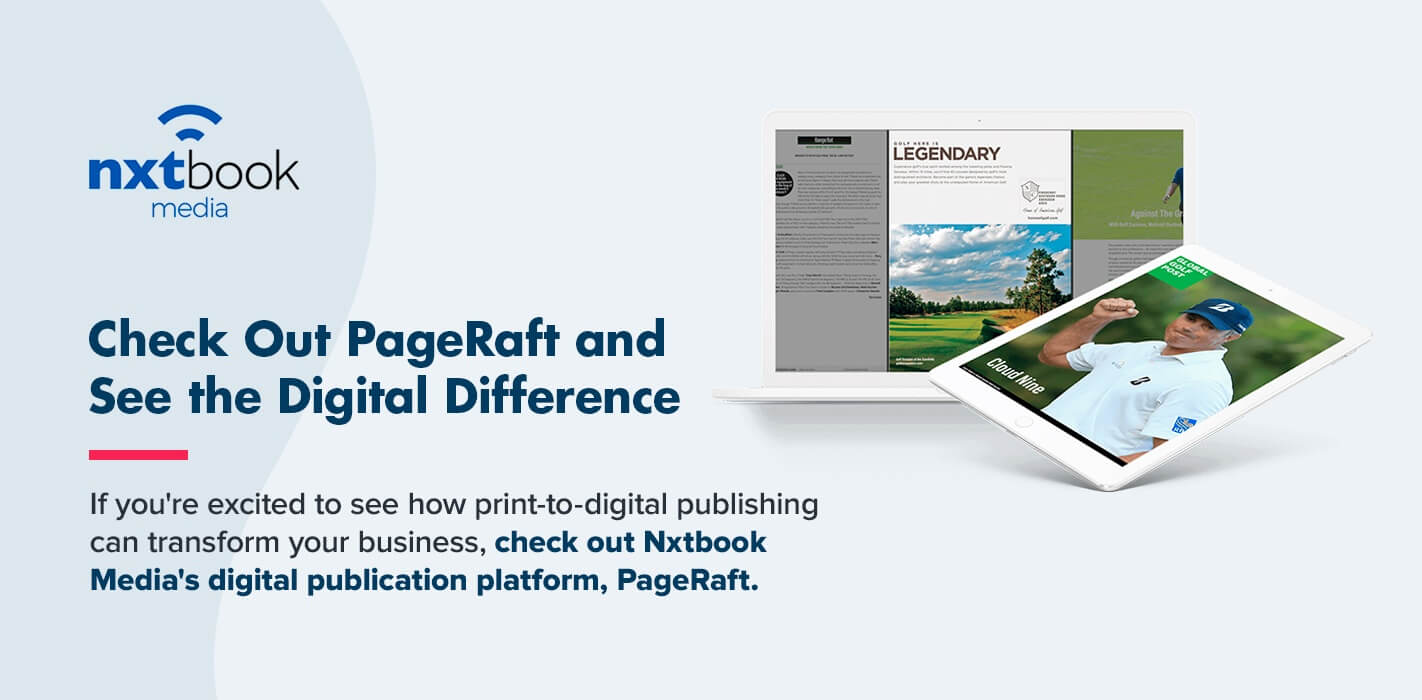
Check Out PageRaft and See the Digital Difference
If you’re excited to see how print-to-digital publishing can transform your business, check out Nxtbook Media’s digital publication platform, PageRaft. It’s a responsive e-magazine platform that lets you design and host compelling digital content. To see the power of a digital-first solution for your online editions, schedule a product walkthrough with one of our team members. We can’t wait to help you grow your online audience!
